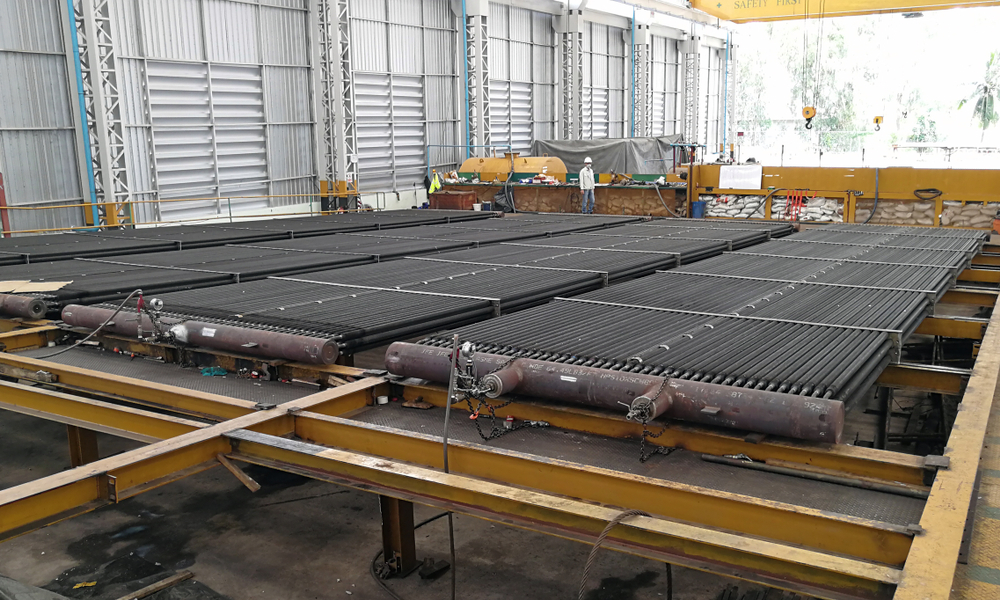Finned tube technology has revolutionized heat transfer in industries such as HVAC, energy, and aerospace. This blog explores its history, current applications, innovations, and future prospects, highlighting how finned tubes enhance thermal performance by increasing surface area. Made from materials like aluminum, copper, and stainless steel, they improve efficiency and save space, making them a popular choice in modern engineering.
Historical Evolution and Key Milestones
The history of finned tube technology dates back to the early 20th century when engineers first recognized the potential of adding fins to improve heat transfer in tubes. Over the decades, several key milestones have shaped the development of this technology, including:
- Introduction of Finned Tubes: Early experiments with thin metal fins attached to tubes significantly improved heat transfer in steam boilers.
- Advancements in Materials: The introduction of aluminum and copper as materials for finned tube manufacturing in the mid-20th century expanded the applications of this technology and improved its performance.
- Integration of Computer-Aided Design (CAD): The late 20th and early 21st centuries saw the integration of CAD software in designing finned tubes, allowing engineers to optimize heat exchanger designs for specific applications, further enhancing their efficiency and performance.
These milestones have paved the way for the modern finned tube technology we see today, which is crucial to heat transfer systems in various industries.
Applications in Modern Industry – HVAC, Energy, and Aerospace
HVAC
In HVAC applications, finned tubes serve as heat exchangers in chillers, cooling towers, and radiators, optimizing heating and cooling processes, improving energy efficiency, and reducing overall operational costs.
Energy
In the energy sector, finned tubes are integral to power plants, particularly in heating and cooling systems. Their ability to efficiently transfer heat from various sources, including solar, geothermal, and nuclear energy, enhances overall system performance and contributes to reducing greenhouse gas emissions.
Aerospace
Finned tube technology plays a vital role in the aerospace industry for aircraft and spacecraft thermal management systems. These systems manage the heat generated by engines and electronic components, ensuring optimal performance and safety during flight. In addition, finned tubes enhance efficiency and reliability, contributing to the overall safety and performance of aerospace vehicles.
Innovations in Finned Tube Design and Manufacturing
Recent innovations have transformed the design and manufacturing of finned tubes, leading to enhanced performance and greater efficiency. These include:
- Improved Manufacturing Techniques: Advances in manufacturing processes, such as extrusion and welding, have allowed for the production of finned tubes with more intricate designs and configurations, further enhancing heat transfer efficiency.
- Nanotechnology Integration: The incorporation of nanotechnology in finned tube manufacturing has led to the development of surfaces that reduce fouling and corrosion, increasing the longevity and performance of heat exchangers.
- Customizable Designs: With the rise of computer-aided design (CAD) software, engineers can now create customized finned tube designs tailored to specific applications, optimizing heat transfer efficiency and performance.
These innovations not only enhance the performance of finned tubes but also contribute to the overall sustainability of heat transfer systems, aligning with the growing demand for environmentally friendly technologies.
Advantages and Limitations of Finned Tubes
Finned tubes offer several advantages:
- Enhanced Heat Transfer Efficiency: The primary benefit of finned tubes, particularly in fin tube heaters, is their ability to significantly improve the efficiency of heat exchangers, reducing energy consumption and operational costs.
- Compact Design: Finned tubes are designed to occupy minimal space while maximizing heat transfer area, making them ideal for applications where space is limited.
- Versatility: Finned tubes can be manufactured from various materials and designed for multiple applications, making them suitable for various industries.
However, there are also limitations to consider:
- Fouling Potential: Finned tubes can accumulate dirt and debris over time, reducing their heat transfer efficiency and requiring regular maintenance.
- Cost: Depending on the material and design, finned tubes may have a higher upfront cost compared to other heat transfer solutions, although the long-term energy savings often justify this investment.
- Thermal Expansion Issues: The difference in thermal expansion rates between the tube and fin materials can lead to mechanical stresses and potential failure if not properly managed during the design and installation process.
Understanding these advantages and limitations is crucial for engineers and HVAC professionals when selecting heat exchangers for specific applications.
Future Trends and Emerging Technologies in Finned Tube Industry
The future of finned tube technology is promising, with several trends and emerging technologies poised to shape its evolution in the coming years:
- Integration of IoT and Smart Technologies: The Internet of Things (IoT) is revolutionizing various industries, and finned tube technology is no exception. By incorporating smart sensors and monitoring systems, engineers can optimize the performance of heat exchangers in real-time, identifying potential issues before they become significant problems.
- Focus on Sustainability: The growing concern for environmental sustainability is driving the development of more eco-friendly materials and manufacturing processes for finned tubes. Research into biodegradable and recyclable materials is gaining traction, offering alternatives that align with global sustainability goals.
- Research into Micro-Finned Tubes: Researchers are exploring the potential of micro-finned tubes, which could significantly enhance heat transfer efficiency in compact applications. These small-diameter tubes have the potential to revolutionize heat exchangers across various industries, from HVAC to aerospace.
- Advances in Computational Fluid Dynamics (CFD): The continued advancements in CFD software are enabling engineers to model and analyze the fluid flow and heat transfer within finned tube systems with unprecedented accuracy. This allows for the optimization of tube designs and arrangements, leading to even greater efficiency improvements.
Also Read: The Beating Heart of Mechanical Systems
Conclusion
Finned tube technology plays a crucial role in industries like HVAC and aerospace by improving heat transfer efficiency and saving space. Understanding its historical evolution, modern applications, innovations, advantages, limitations, and future trends allows HVAC professionals and engineers to appreciate its significant impact on industrial advancement.

